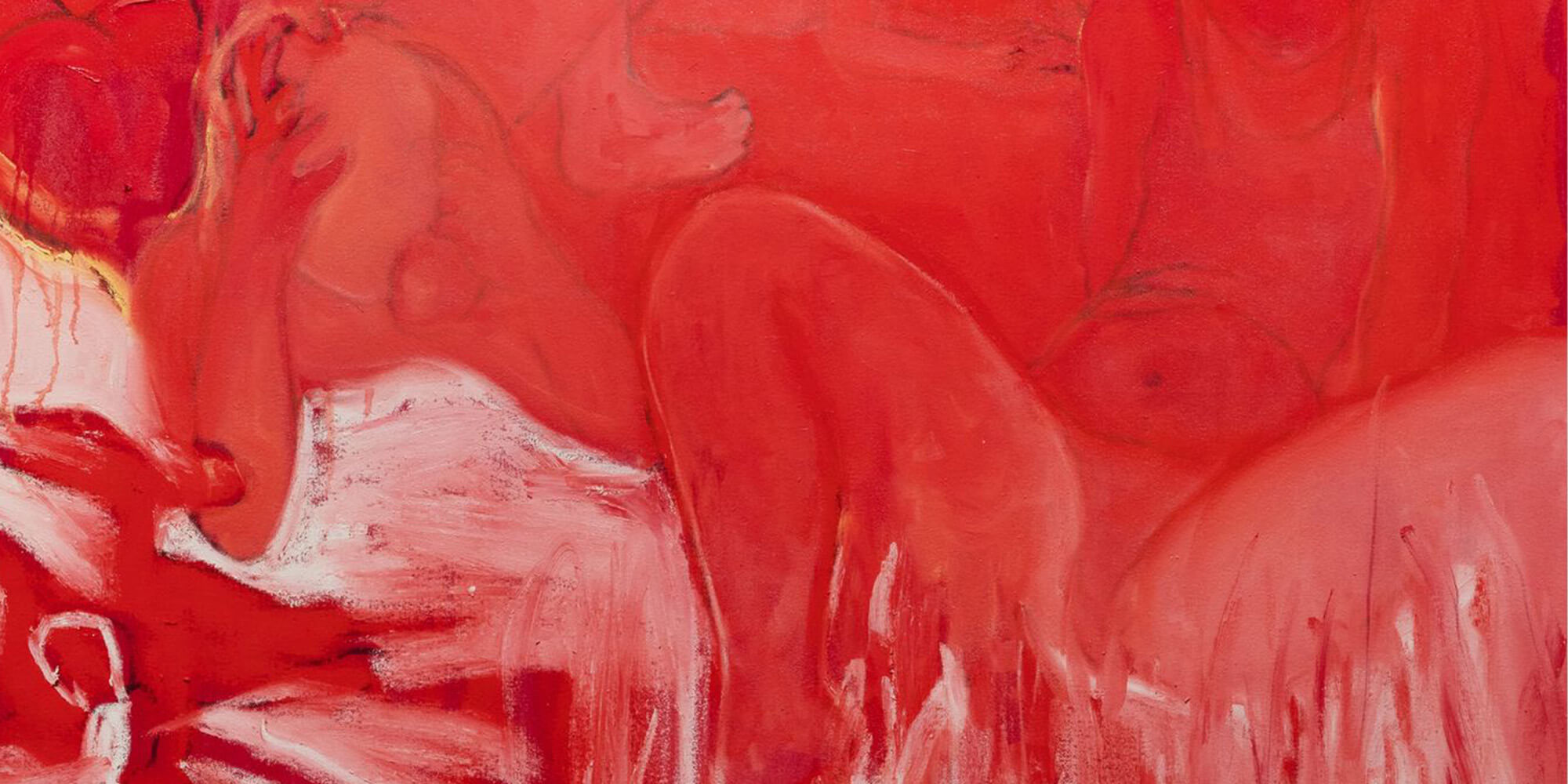
Rita Ackermann
Stretcher Bar Painting 1
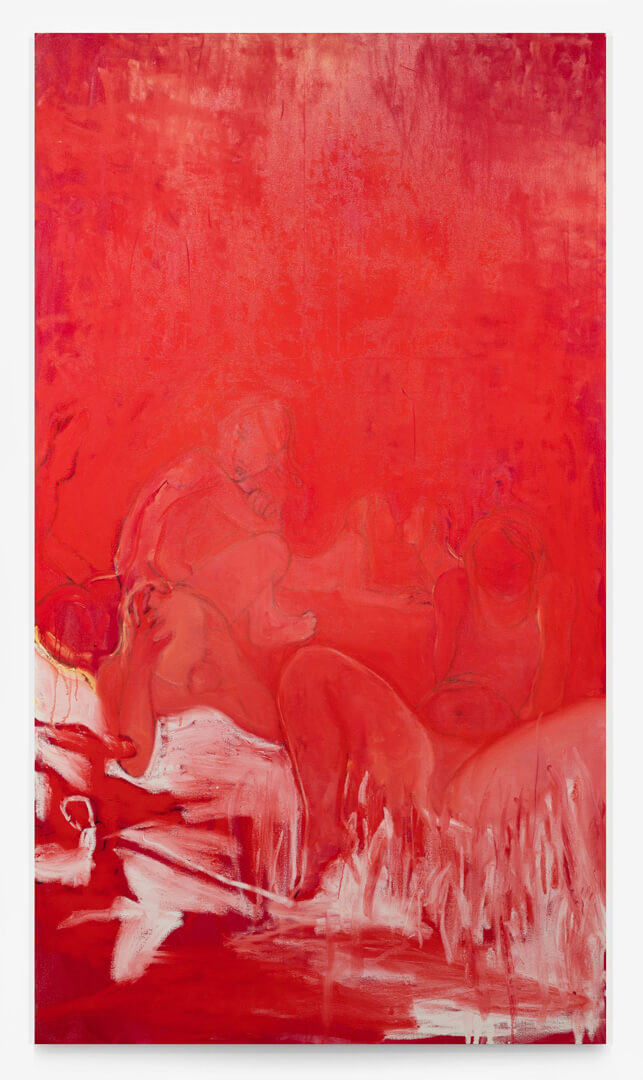
Stretcher Bar Painting 1
2015 Oil on canvas 198.8 x 112.4 x 4.4 cm / 78 1/4 x 44 1/4 x 1 3/4 in
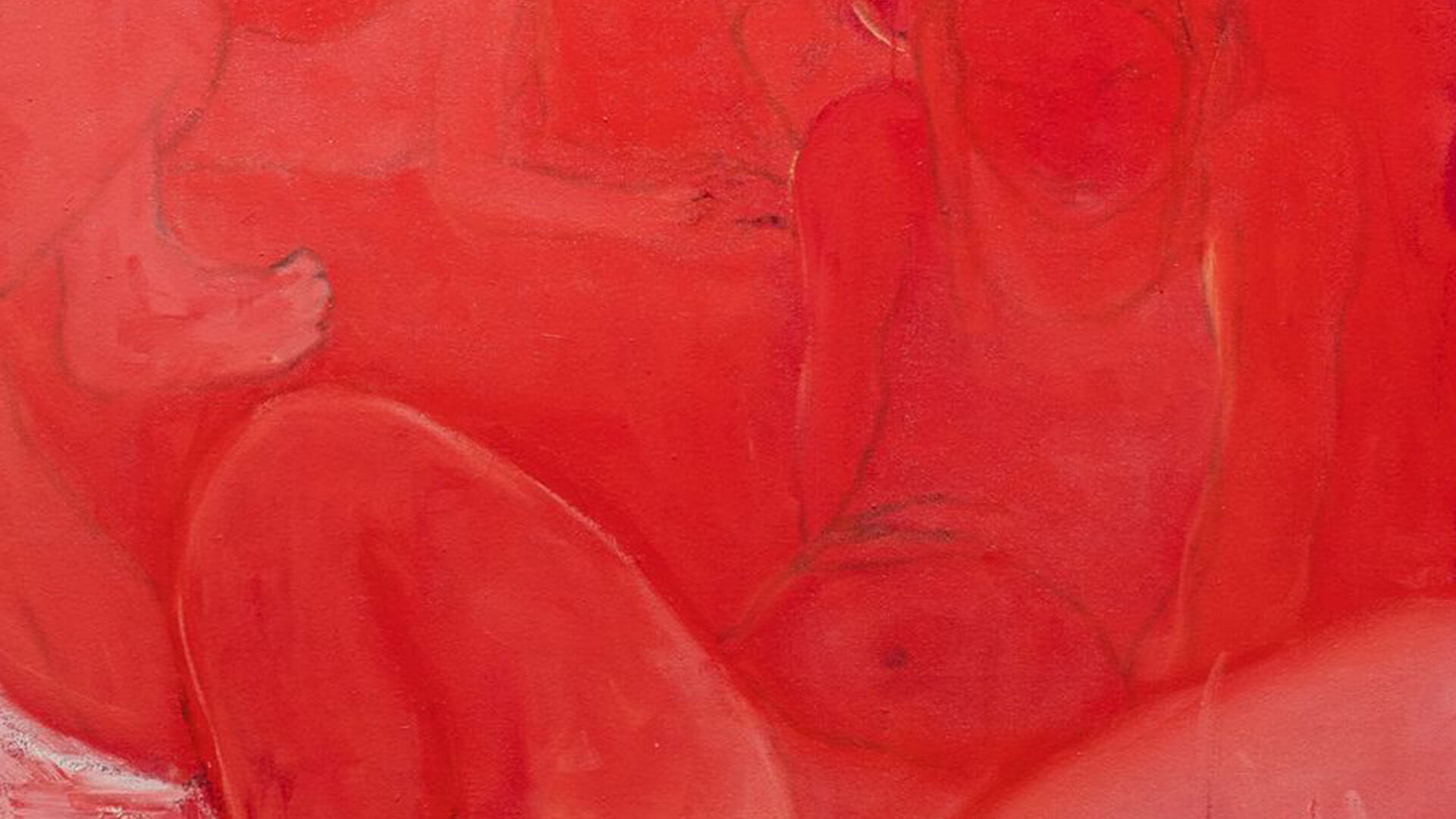
An inheritor of the gestural abstractions of such American masters as Willem de Kooning and Cy Twombly, Rita Ackermann’s compositions occupy a space between the figurative and the abstract. In her ‘Stretcher Bar Painting’ series curvaceous human forms in vibrant pink and orange simultaneously disappear and re-emerge against the outlines of the crossbars below. ‘Stretcher Bar Painting 1’ has all the hallmarks of the eponymous series, which the artist began in 2015.
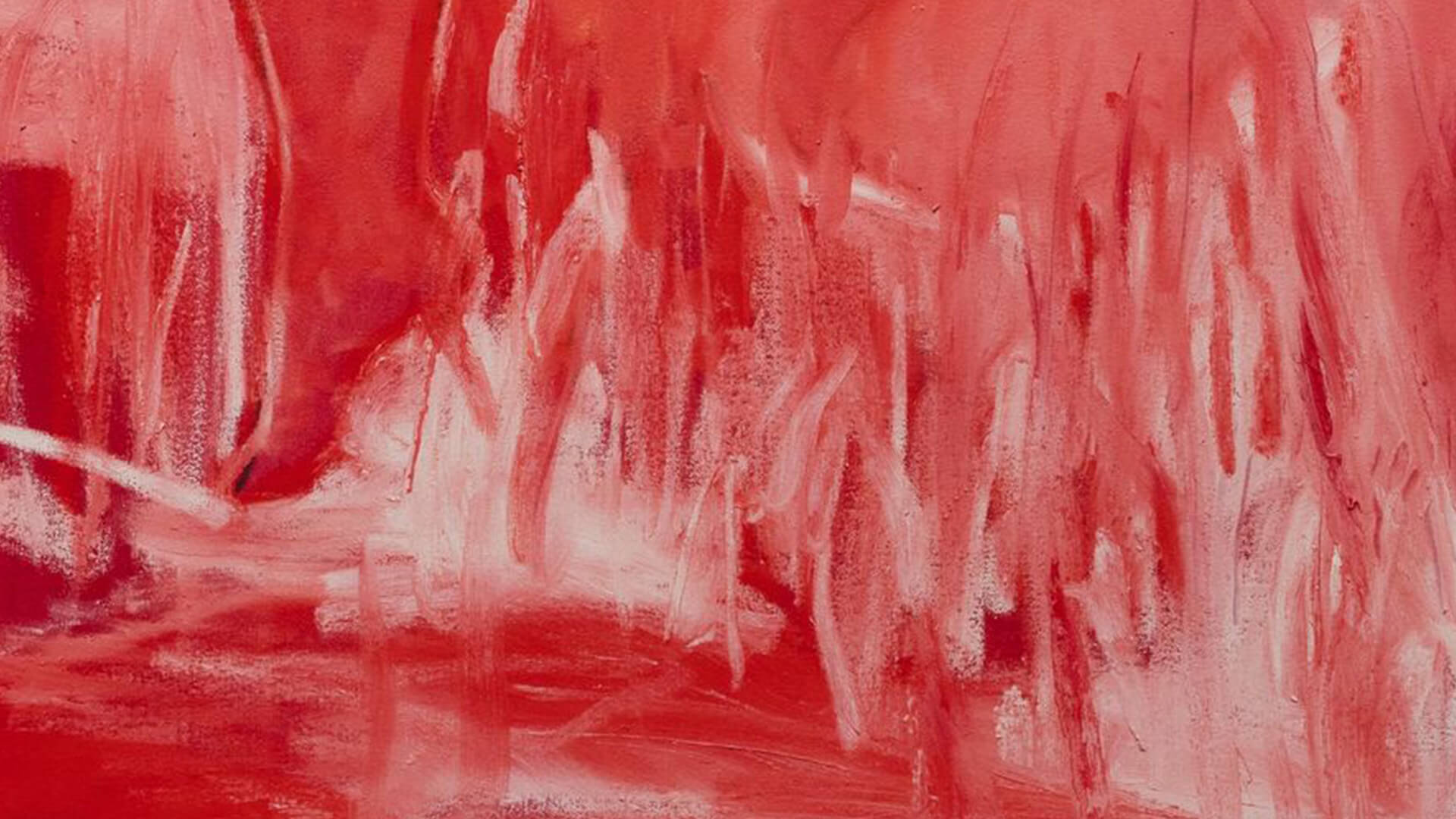
Curator Gean Moreno evocatively captured Ackermann’s distinctive approach when describing the remarkable series: 'Ackermann’s Stretcher Bar Paintings take their title from the emergence of x-ray-like imprints which surface when impressions of paint and pigment become transpired with the structural presence of the picture plane itself. Rather than correcting the effect, Ackermann has decided to embrace this anomaly, forging the series after their disadvantage. Proportionate to the human body, the synthesisation of such attributes form fractured compositions whereby background and foreground collapse; a painting revealing only as much as it conceals.'
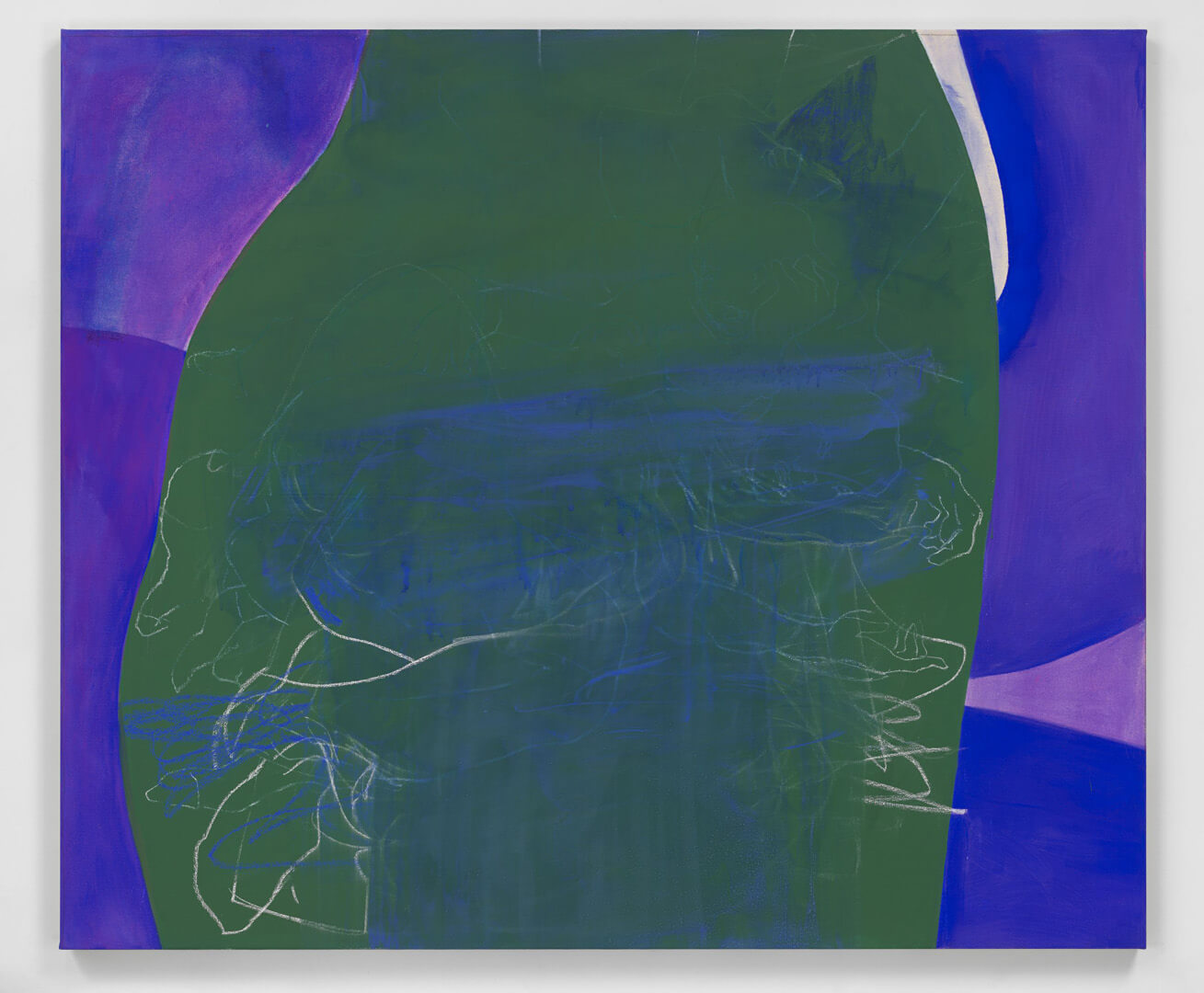
Water Lily Blues II
2018 Acrylic, oil, pigment, pastel, chalk and spray paint on canvas 167.6 x 198.1 x 3.8 cm / 66 x 78 x 1 1/2 in

Rita Ackermann’s ‘Water Lily Blues II’ (2018) offers a continuation of the artist’s innovative investigation into the deconstruction and disappearance of a pictorial language. In a series titled ‘Chalkboard Paintings’, large-scale compositions on canvas were primed with chalkboard paint, on which washes of white chalk and green and blue pigments were applied. These Abstract Expressionist-like works are reminiscent of actual chalkboards in a classroom, covered with unintentional erasures and marks, yet they have been conceptually executed by multiple deletions of figurative drawings and landscapes.
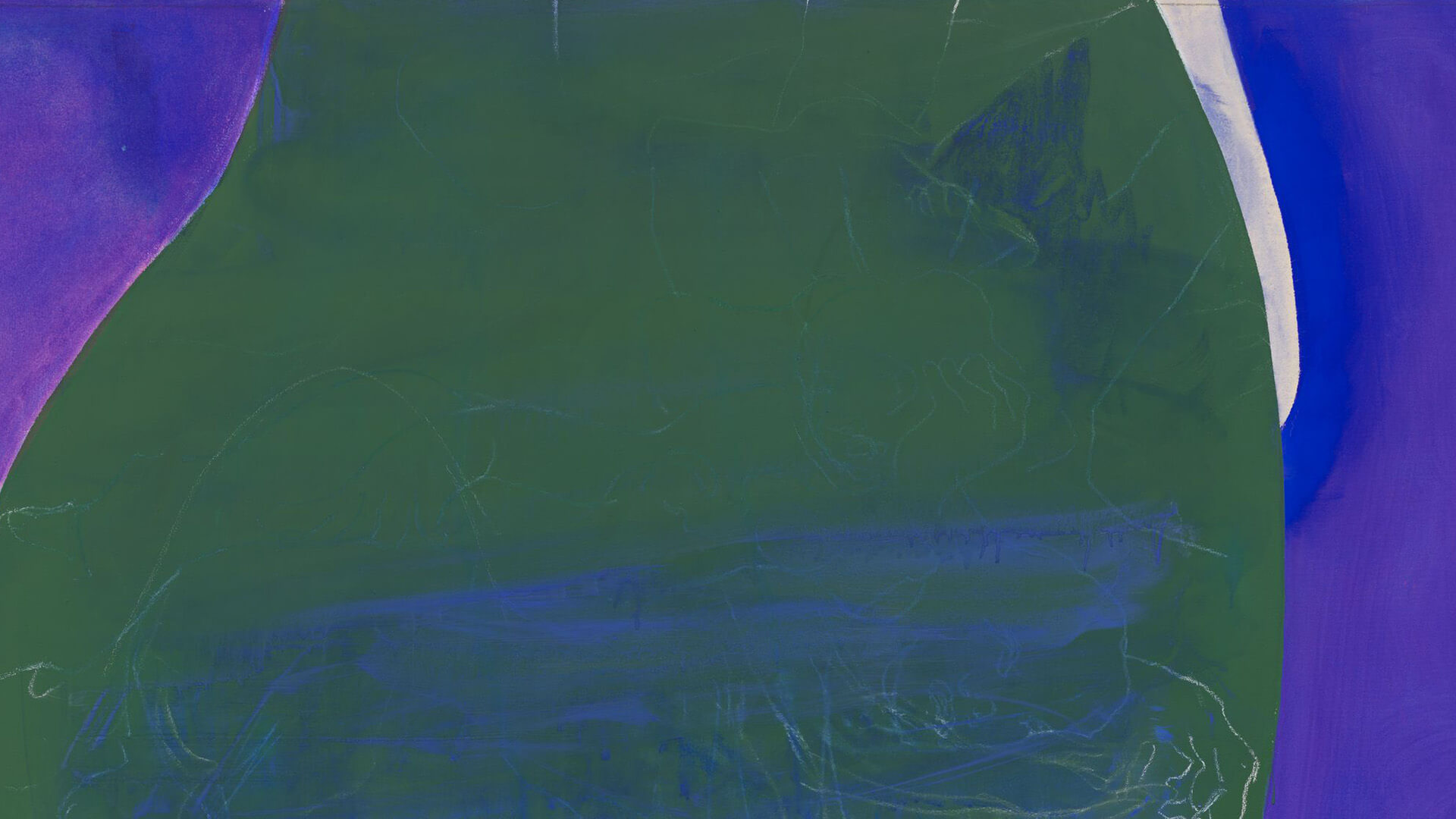
By way of these gestures, the revenant outline of the erased drawings often emerges into the foreground. The final picture is a record of these movements. The repetitive steps of layering and erasure cause the chalk lines to dissolve in a cyclical process through which new abstracted images and shapes emerge. These are then sealed using several layers of fixative. Rather than abandon figuration for abstraction, Ackermann instead aims for the liminal divide that lies between the two. She presents contrasting pallets and pigments and a constant shifting between systematic and accidental lines; her controlled gestures create a script in reverse.

Rita Ackermann
The opposing impulses of creation and destruction mark the touchstone of the Hungarian-born, New York-based artist Rita Ackermann’s practice, which continues to evolve and manifest itself in the shift from representation to abstraction. Ackermann’s compositions occupy a space between the figurative and the abstract, where human forms simultaneously disappear and re-emerge.